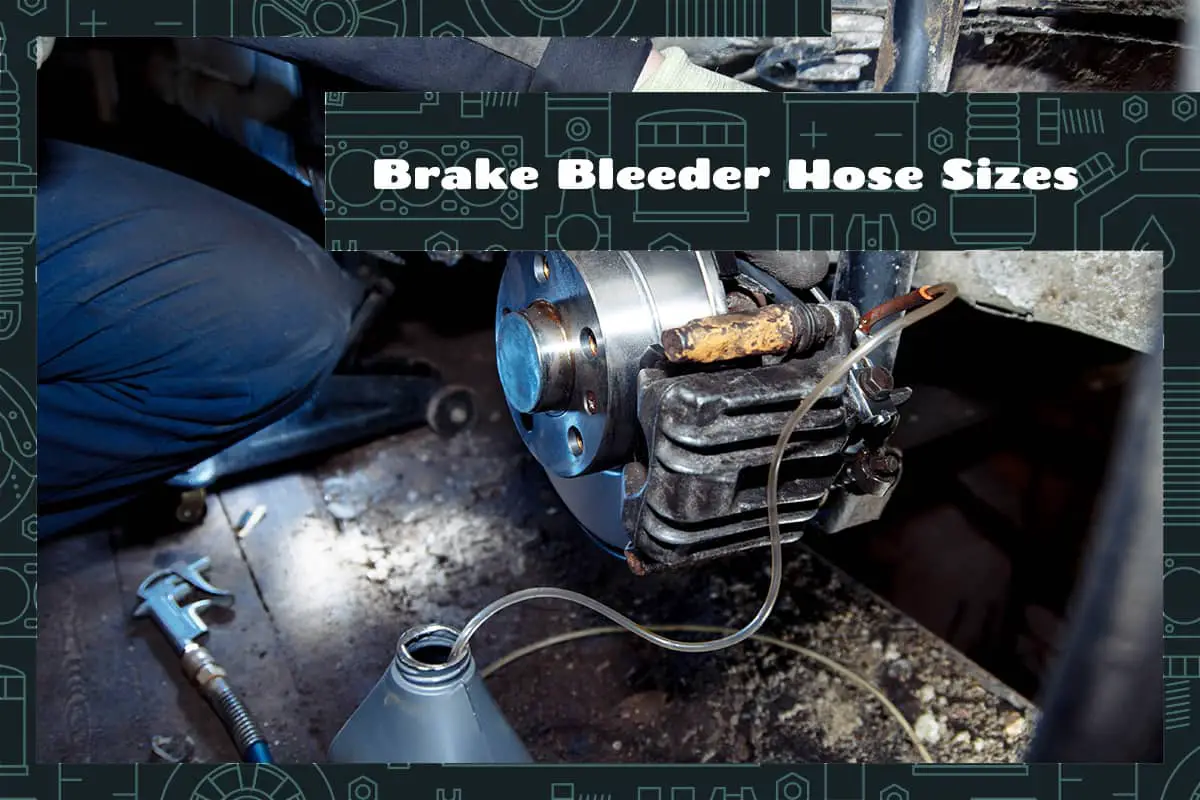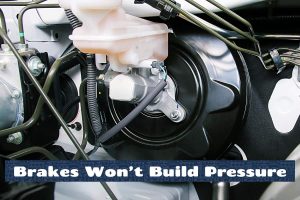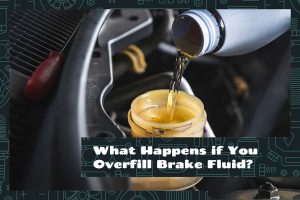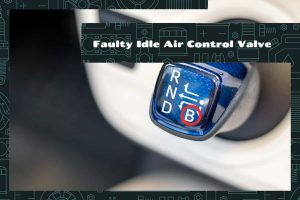Brakes allow us to slow down and stop safely, and the mechanisms behind their operation are complex yet fascinating. At the heart of maintaining effective brakes is a process called “brake bleeding,” and a key tool in this process is the brake bleeder hose.
The standard brake bleeder hose size is typically ¼ inch. However, they also come in sizes like 1/8 inch, 3/8 inch, and 5/16 inch, depending on the vehicle and its specific needs.
In this guide, we’ll take a closer look into the world of brake bleeder hose sizes, their significance, and the broader role they play in vehicle maintenance.
Basics of Brake Bleeding
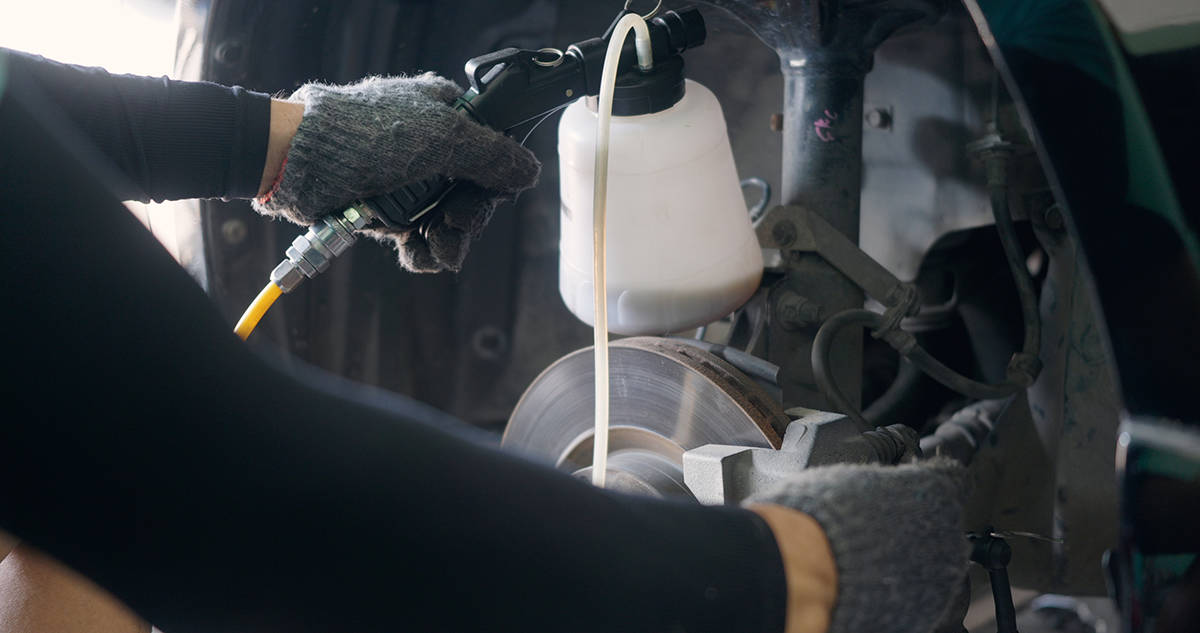
Brake bleeding refers to the procedure of purging air from the brake lines, ensuring that only brake fluid remains within the system. Air in the brake system can compromise braking power since air is compressible, whereas brake fluid isn’t. This means that if there’s air in your brake lines, pressing the brake pedal may feel spongy or unresponsive, and the braking efficiency could be significantly reduced.
The braking system of a car operates under hydraulic principles. When you press the brake pedal, you’re applying pressure to brake fluid, which then transmits this pressure to the brake pads, forcing them to clamp down on the brake rotors. This clamping action slows down or stops your vehicle.
Bleeding the brakes involves connecting a hose from a bleed valve on the brake caliper to a container. The brake pedal is then pressed to force out the old fluid (and any trapped air), which is collected in the container. Fresh brake fluid is simultaneously added to the brake fluid reservoir to ensure the system doesn’t run dry. The process is repeated for each brake caliper until all the old fluid (and air) has been replaced with fresh fluid.
The Significance of Hose Size
The diameter or size of the brake bleeder hose directly influences the flow rate of the brake fluid. Think of it like water flowing through a garden hose; a wider hose allows more water to flow through than a narrower one. Similarly, a larger brake bleeder hose allows for a faster flow of brake fluid, speeding up the bleeding process.
However, there’s a catch. While a larger hose can speed up the process, it may not create a tight seal with the bleed valve. On the other hand, a hose that’s too small might restrict the flow and can be difficult to connect to the bleed valve. The main problems associated with using the wrong hose size are as follows:
- Leakage: A hose that’s too big for the bleed valve might not seal properly. This can result in brake fluid leaks, which can be messy and wasteful. Worse, if the fluid comes into contact with the car’s paint, it can cause damage.
- Inefficient Bleeding: A hose that’s too small might restrict the flow of brake fluid, leading to prolonged bleeding times. It also increases the risk of not removing all the air bubbles from the system.
- Potential Damage: Continuously forcing a mismatched hose onto a bleed valve can damage the valve over time, leading to potential replacements and extra costs.
Standard Brake Bleeder Hose Sizes
The diameter of the brake bleeder hose dictates the volume of brake fluid that can be transferred at a given time. Generally, these hoses come in standard sizes, and each size corresponds to a certain type of vehicle or brake system.
- ¼ inch Hose: This is the standard size for many passenger vehicles. It offers an optimal balance between the speed of fluid flow and ensuring a snug fit on most brake bleed valves of standard cars.
- 1/8 inch Hose: More common in compact vehicles or specific types of motorcycles, this hose size is tailored for brake systems that have smaller reservoirs and demand a precise flow rate.
- 3/8 inch and 5/16 inch Hoses: Often reserved for bigger vehicles like trucks, SUVs, or buses, these hoses cater to brake systems that have larger reservoirs, necessitating a faster and larger flow of brake fluid.
Custom and Performance-Oriented Brake Bleeder Hose Sizes
Before diving into the sizes of custom brake bleeder hoses, let’s first discuss the reasons behind opting for custom brake systems:
- Enhanced Performance: Custom brake systems, especially those tailored for racing or off-roading, are designed to provide superior stopping power, consistent performance, and better heat dissipation.
- Aesthetic Modifications: Some customizations are purely for visual appeal. Unique brake caliper colors, larger rotors, or custom wheel designs might necessitate alterations in the brake system, including the bleeder hose size.
- Vehicle Modifications: Upgrades like lift kits or oversized tires can impact the vehicle’s brake requirements. Modified vehicles might need brake systems that differ from the factory setup.
Custom Brake Bleeder Hose Sizes
While standard hoses are widespread, custom brake systems might require hoses with unique diameters or materials. Some common custom sizes include:
- 5/32 inch Hose: An intermediary size, often found in performance-oriented motorcycles or compact race cars, catering to brake systems designed for rapid fluid transfers.
- 7/16 inch Hose: Designed for high-performance vehicles or heavy-duty trucks with enhanced brake systems. This size allows for a high volume of brake fluid transfer, vital for consistent performance under demanding conditions.
Benefits and Considerations of Custom Hoses
Choosing a custom or performance-oriented brake bleeder hose brings several benefits:
- Enhanced Durability: Custom hoses, especially those made from specialized materials, often offer increased durability and longer lifespans than standard hoses.
- Consistent Performance: High-performance vehicles require brake systems that can deliver consistent results, especially under demanding conditions. Custom hoses, tailored for such applications, can ensure the brake fluid flows optimally, providing consistent braking performance.
However, there are considerations to keep in mind:
- Cost: Custom components, given their specialized nature, often come at a premium. It’s essential to weigh the benefits against the investment required.
- Maintenance: While durable, custom hoses might have specific maintenance requirements or recommended inspection intervals. Staying on top of these ensures the longevity and performance of the hose.
